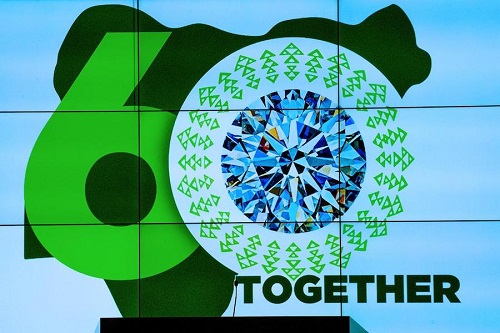This post has already been read 1863 times!
As Nigeria gets set to mark her diamond jubilee as a political entity, the fact is not lost on anyone that at no time has the nation been this divided along ethnic and religious lines, reports Shola Oyeyipo
The sideshow is the seeming controversy on whether or not the logo designed to mark the 60th independence anniversary of the nation was plagiarised. The main act is the message the logo was meant to portray and convey to a beleaguered people, who have had to face a constant exploitation of their fault lines by a rapacious political elite.
The message in the independence logo is: “60 Years Together”. In the actual sense of the word, the nation has been together as one entity. Since independence, the nation has not broken up despite political and ethnic centrifugal forces pulling her from different angles.
What has contributed to this was the lopsided nature of the federation at independence. As at 1960, the nation had three regions: Western, Eastern and Northern Regions. While they were three in number, the sizes were so disproportional.
The North, in size, was twice the size of the other two put together. And when the three gladiators that were leaders of the ethnic groups that made the three regions were to form parties, they formed it along their ethnic and tribal lines.
For instance, Sir Ahmadu Bello formed the Northern People’s Congress (NPC); the late Chief Obafemi Awolowo formed the Action Group (AG), while Dr. Nnamdi Azikiwe formed the National Council for Nigeria and the Cameroons (NCNC).
The crisis that erupted after the general election of 1964 was what triggered the crisis in the Western Region, which claimed many lives and properties and ultimately led to the civil war of 1967 to 1970. Even before then, the Mid-Western Region was carved out of the Western Region. Many, till today, still feel if any region was to be divided into two, it was the Northern Region and not the Western Region.
Real or perceived, the thinking has been that of a federation where certain parts are favoured over the others. For instance, the Middle Belt has always insisted on having a distinct identity from the core north. They have always claimed that they are a separate political and ethnic entity and hence should not be classified as being part of the North.
Two major developments have tended to back this position. In 1976, with General Yakubu Gowon being toppled via a military putsch a year before, there was a failed coup, which though claimed the life of General Murtala Mohammed on April 13, 1976.
Majority of those, who planned this coup were officers of the Middle Belt extraction, led by Colonel Buka Suka Dimka. The person that would have ultimately become the head of state was General Ilya Bisalla, who was executed alongside Dimka and many others in April 1976 for the role in the failed coup of the previous month.
In 1990, there was another failed coup led by Major Gideon Orka, also of the Middle Belt extraction. In fact, in their coup speech on Sunday April 22, 1990, they announced the ostracising of five core northern states of Sokoto, Kano, Borno, Kaduna and Katsina. Again, the coup failed but a statement had been made.
While the election of June 12, 1993 was meant to further heal real or perceived ethnic wounds, the annulment of the election by the military regime of General Ibrahim Babangida, threw the country into a political impasse that many still believe the nation has not recovered from.
Business mogul and multi-millionaire, MKO Abiola was on the cusp of victory before the annulment of the election. The crisis that followed was not mitigated until 1999, when the nation, for the first time, had two presidential candidates of the same ethnic stock – Olusegun Obasanjo and Oluyemi Falae. Obasanjo won and spent eight years.
Fast-forward to 2015, and retired General Muhammadu Buhari, after three failed attempts, finally made the Presidency ostensibly buoyed by the help he got from the highly sophisticated business and political elite as well as the intelligentsia of the Southern zone of the country. They gave Buhari massive push and also backed this up with him winning in five of the six states of Southwest and other parts that make up the zone.
While many expected Buhari to rally the country together, reverse has been the case. No leader has mismanaged the nation’s ethnic and religious diversity like Buhari since independence.
From heavily lopsided appointments to treatment of the Fulani herdsmen crisis with very obvious kid’s gloves, Buhari has even disappointed most of his loyal fans with the way he has gone about the business of governance.
Thus, as the nation is set to mark her 60th independence anniversary, there has never been any time call for a break-up has been this strident. Some elements in the West are clamouring for Oduduwa Republic and are even saying they would “declare” on October 1.
The call for the resuscitation of the defunct Biafra Republic has remained and is being championed by Nnamdi Kanu, self-styled self-determination campaigner, who has built very strong followership among young Igbo sons and daughters. Yet, all these might not have been necessary if there has been a conscious attempt to heal wounds and build bridges that unite.
This is why many would be wondering if indeed, the nation is truly “together” at 60?
Pix: President Muhammadu Buhari, Secretary to the Government of the Federation, Boss Mustapha and Vice President Yemi Osinbajo at the unveiling of Nigeriaa’s 60th independence



